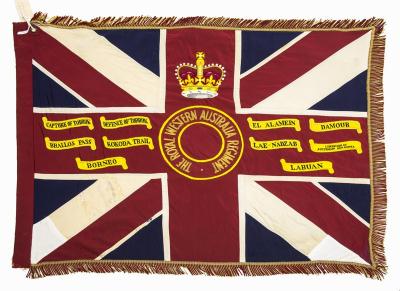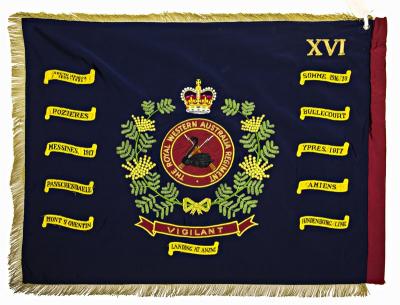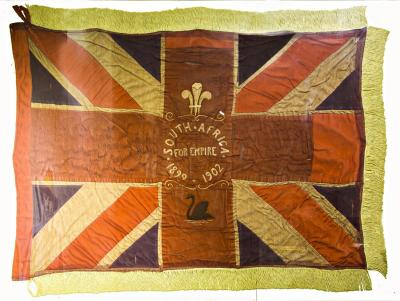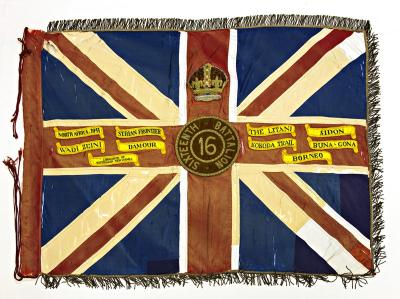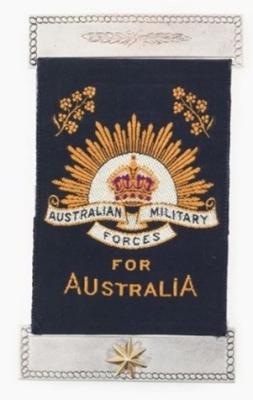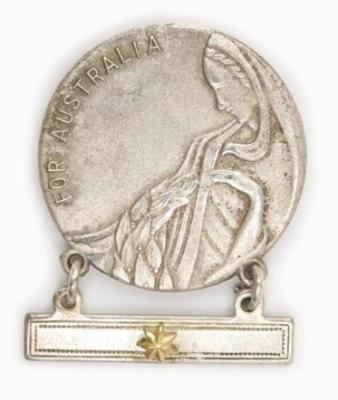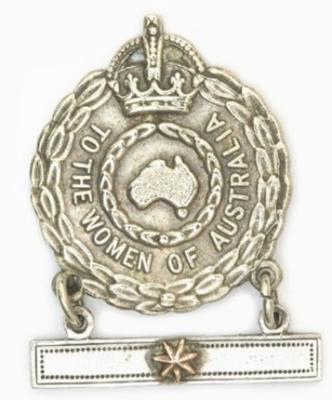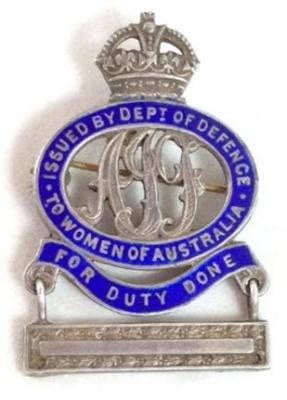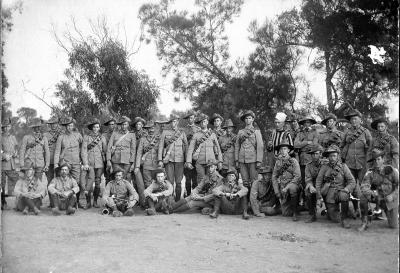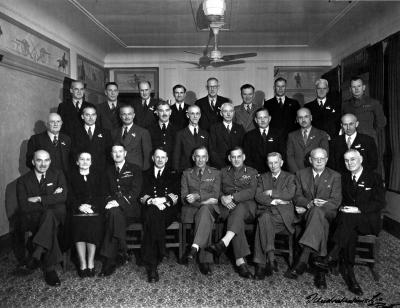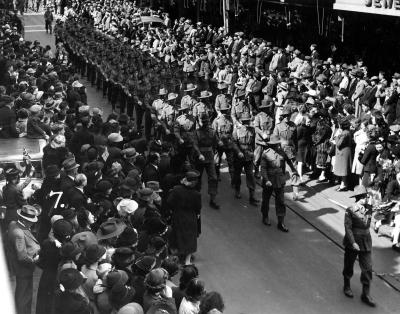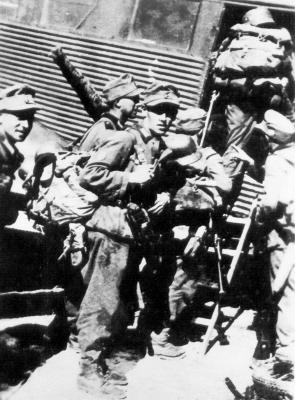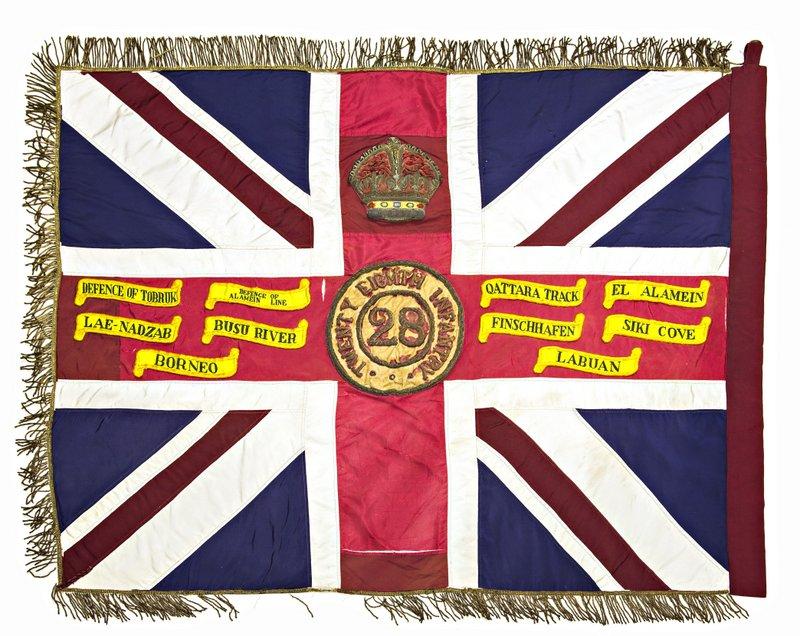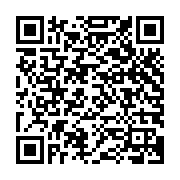28th Battalion (The Swan Regiment) - King's Colour (Initial Presentation 1920)
Union flag with gold fringes. In the centre the Arabic numeral "28" on a red background within a circle inscribed "TWENTY EIGHTH INFANTRY ", surmounted by the Crown. Emblazoned on the colour are the following Second World War Battle Honours:-
DEFENCE OF TOBRUK, DEFENCE OF ALAMEIN LINE, QATTARA TRACK, EL ALAMEIN, LAE-NADZAB, BUSU RIVER, FINSCHHAFEN, SIKI COVE, BORNEO, LABUAN
This former King's Colour was originally authorised by King George V in 1919 in recognition of services of 28th Battalion (AIF) during the Great War. Presented by HE the Governor General Sir Ronald Munro-Ferguson, PC, CGMG at a parade in King's Park on 2 October 1920 and handed over to 2nd Battalion, 28th Infantry Regiment of the Citizen Forces. This colour was passed on to 28th Battalion, which was created, from other units in 1921. The colour was subsequently consecrated by the Chaplain General, Archbishop COL Riley, OBE, VD,DD at a parade on the Esplanade, Perth, 15 November 1924.
At the time of presentation this colour was a plain union flag with no central devices or other distinctions included on it. Following Military Board approval given in 1925 the centre circle and Crown were later added, in accordance with the approved design for a King's Colour.
With the re-activation of the Citizen Military Forces (CMF) following the Second World War, the 16th/28th Infantry Battalion (The Cameron Highlanders of Western Australia) was raised as a linked battalion in 1948 to carry on the identity and traditions of the pre-war 16th and 28th Battalions respectively. The King's and Regimental Colours formerly held by these two battalions were passed on to the new battalion who paraded them in rotation on ceremonial occasions.
The above battalion became unlinked in March 1952 and 28th Infantry Battalion (The Swan Regiment) became an independent battalion within its own right. The former colours of 28th Battalion were handed back at a parade at Northam Camp on 24 August 1952.
Details
Details
Plain wooden pike. No pike head. (This was reported missing before removal from the State War Memorial, King's Park). Notwithstanding the monarch at the time of presentation, the Primary Colour of an infantry battalion is referred to according to the reigning monarch. Hence all former Queen’s Colours became as a matter of protocol, King’s Colours on the accession of King Charles III on 8 September 2022.
With the accession of HM Queen Elizabeth II to the throne in 1953, all Colours that had originally been presented as King's Colours, and were still carried by units on the current Order of Battle, were automatically deemed to be Queen's Colours.
Under major reorganisation of the CMF in 1960, all individual infantry battalions that existed at the time within each State were amalgamated to form State regiments, taking effect from 1 July 1960. Thus from that date the 11/44th, 16th and 28th Infantry Battalions were amalgamated to form The Royal Western Australia Regiment. In September 1960, at a ceremonial parade held at Northam Camp, the Colours carried by all former battalions were handed over for safe keeping by the new regiment.
Battle Honours for the Second World War were promulgated under Australian Army Order 135/1961 and the 10 selected honours approved for emblazoning on the Queen's Colour were subsequently added in 1962
These former colours were subsequently laid up in the undercroft at the State War Memorial, King's Park on 29 November 1964. These were transferred to the Army Museum of WA in 1988 as part of the Bicentenary Colours Project.
Australian Army Museum of Western Australia
Australian Army Museum of Western Australia
Other items from Australian Army Museum of Western Australia
- 16th Battalion, The Royal Western Australia Regiment - King's Colour (1962 Presentation)
- 16th Battalion, The Royal Western Australia Regiment - Regimental Colour (1962 Presentation)
- South African War Veterans Association - Banner
- 16th Battalion (The Cameron Highlanders of Western Australia) - King's Colour (1951 Presentation)
- Mothers’ and Widows’ Badge – World War 1
- Mother's and Widow's Badge – World War 2
- Female Relative Badge World War 2
- Female Relative Badge World War 1
- World War 1, Guildford, Western Australia, Australia, Australian Field Artillery, 1914
- Post-War, Swan Barracks, Western Australia, Australia, LE LE SOUEFF
- World War 2, Western Australia, Perth, 2/11 Battalion, 1940
- World War 2, Eastern Mediterranean, Crete, German troops
